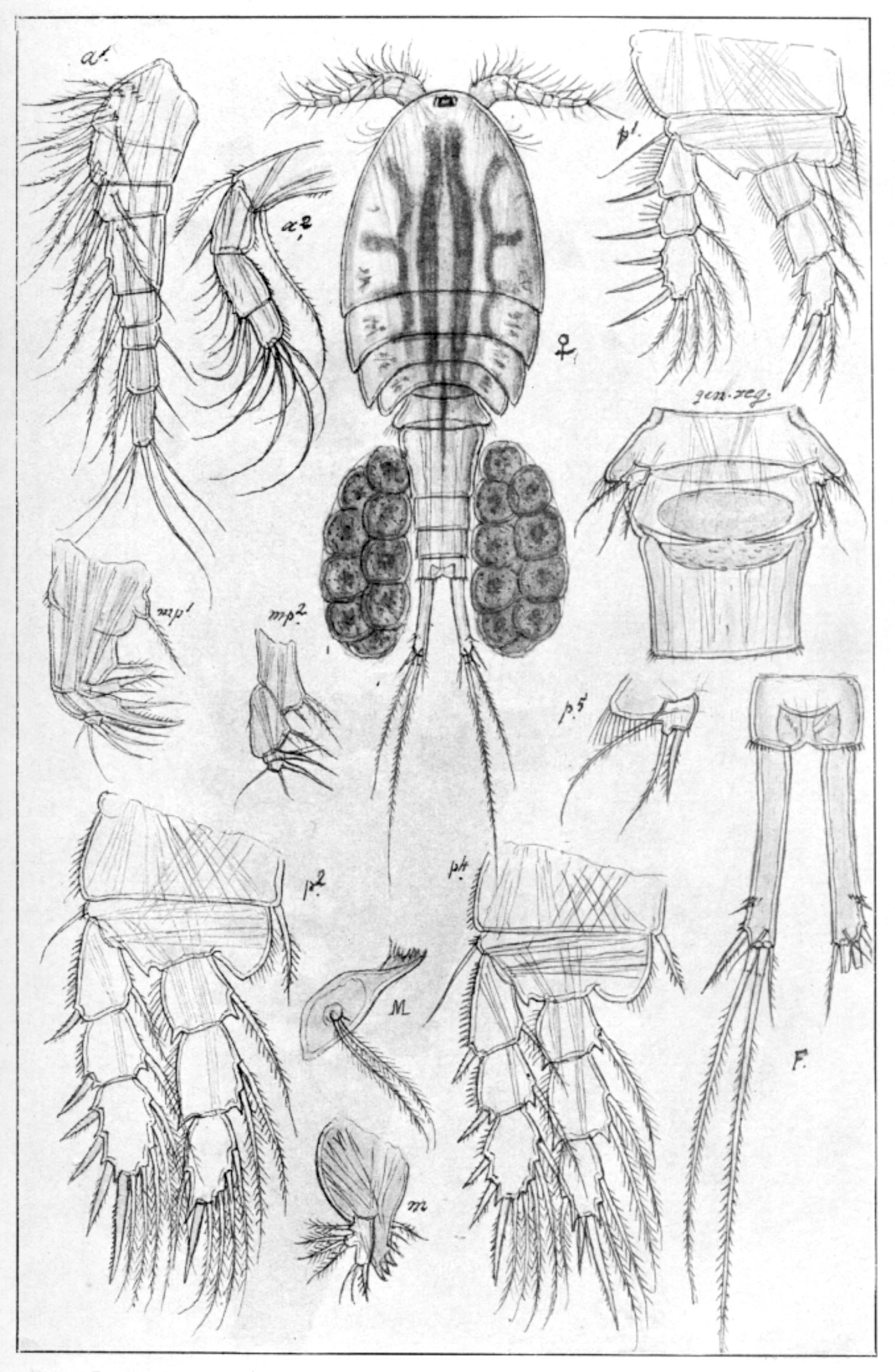Paracyclops fimbriatus
Because of its short, eight segmented antennule and relatively long tail, Paracyclops fimbriatus is easily distinguished from all other species. Electrolyte rich water seems to favour this species, having a scattered distribution in Norway.
Key characteristics
Paracyclops fimbriatus (female)
Because of its short antennule and long tail, about six times as long as wide, Paracyclops fimbriatus is easily distinguished from all other species, including species within the same genus. Its antennae have only 8 segments and like P. affinis the two furca branches are dorsally crossed by a row of small spines. Its colour is whitish while the ovarian tubes and eggs are dark bluish.
Female: Length 0.9–1.0 mm
Male: Length 0.7–0.9 mm
Ecology and distribution
P. fimbriatus is recorded from almost 4 % of the investigated waterbodies, having a scattered distribution in Norway. It occurs from sea level to the alpine zone (1132 m a.s.l.). The majority of records are from below 300 m a.s.l. where it is found in water bodies of all sizes. It seems tolerant towards acidity (pH 4.6) but is most frequently found when pH>6.0. Electrolyte rich water favours the species which occurs in more than 10 % of the water bodies having a conductivity above 10 mS/m.
| Vitenskapelig navn | < 4,5 | 4,5 - 4,9 | 5,0 - 5,4 | 5,5 - 5,9 | 6,0 - 6,4 | 6,5 - 7,0 | 7,0 - 7,4 | > 7,5 |
|---|---|---|---|---|---|---|---|---|
| 0 | 2,6 | 2,6 | 3 | 5,6 | 3,9 | 4,4 | 5,6 |
| Vitenskapelig navn | < 1,0 | 1,0 - 1,4 | 1,5 - 1,9 | 2,0 - 2,9 | 3,0 - 3,9 | 4,0 - 4,9 | 5,0 - 6,9 | 7,0 - 9,9 | > 10,0 |
|---|---|---|---|---|---|---|---|---|---|
| 0 | 1,1 | 1,6 | 2,7 | 3 | 3,1 | 6,5 | 4,6 | 9,7 |
| Vitenskapelig navn | < 0,01 | 0,01 - 0,09 | 0,1 - 0,9 | 1,0 - 9,9 | 10,0 - 99 | 100 - 999 | > 1000 |
|---|---|---|---|---|---|---|---|
| 2,9 | 4,5 | 1,1 | 1,4 | 4,1 | 7,4 | 6,5 |
| Vitenskapelig navn | < 100 | 100-299 | 300-499 | 500-699 | 700-999 | >1000 |
|---|---|---|---|---|---|---|
| 5,2 | 6,5 | 1,7 | 0,7 | 1 | 1,1 |
Look alikes
Paracyclops poppei

